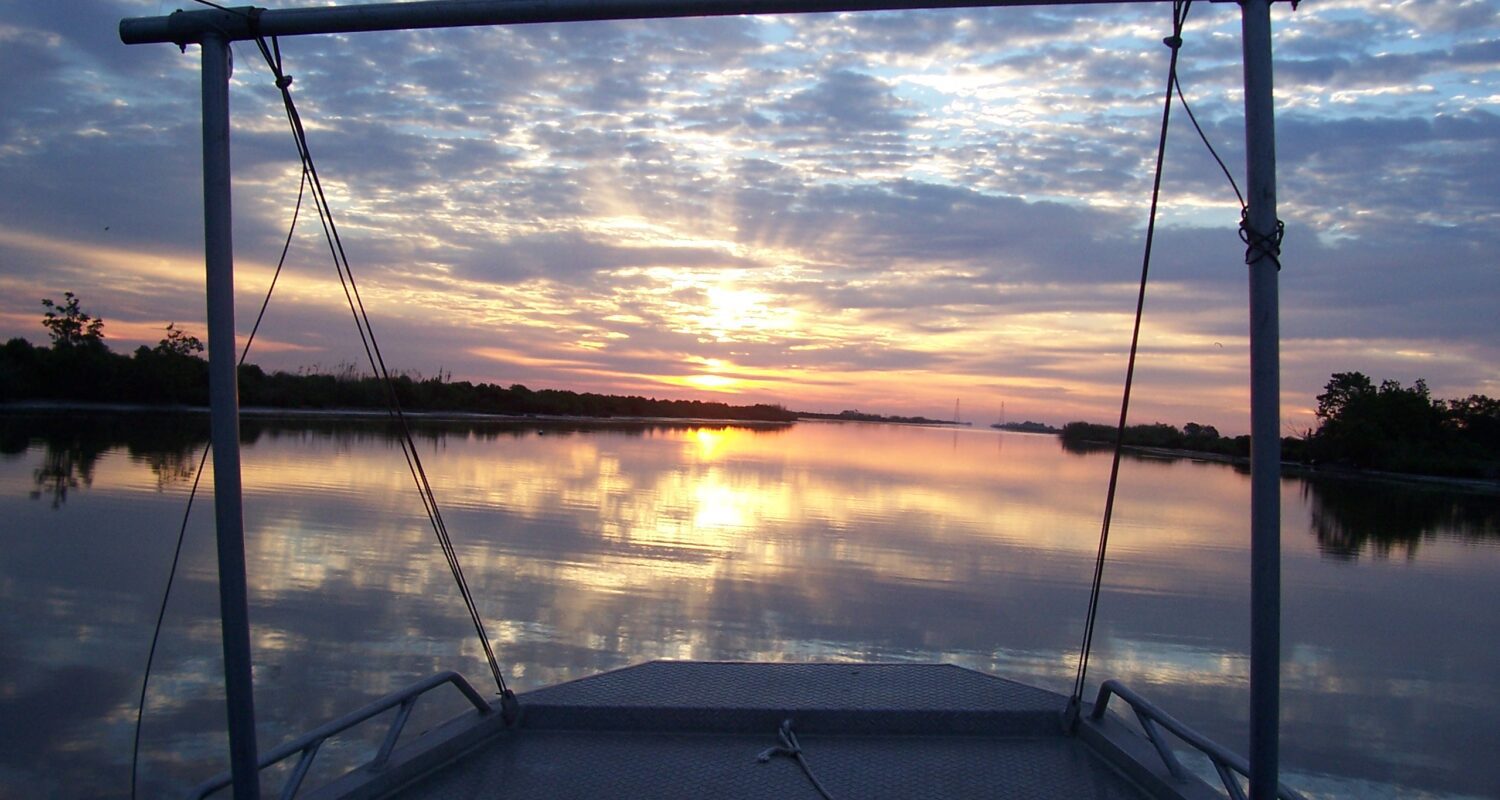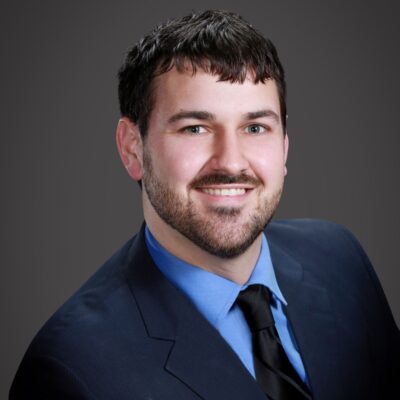 Menu
Menu
- Fenstermaker Insights
- Environmental
- How Oysters Became My World
Fenstermaker Insights
How Oysters Became My World
By Nicholas Gaspard, MS, PMP – July 20, 2018


From as early as I could remember, I had a passion to be near water. I loved the great outdoors and what a perfect place to grow up – Louisiana, Sportsman Paradise. I’d like to say that my path through life has been sheer fate of good luck, but my heart tells me it was divine intervention.
I went to school in the little town of Delcambre, Louisiana. There were all 42 kids in my graduating class. My guidance counselor told us a bit of life advice in that if you find a career you love, you’ll never have to work a day in your life. I took that to heart and KNEW I had to become a marine biologist.
Throughout my secondary education, I thought I wanted to go to the State’s flagship university, LSU. I was so excited during my junior year when career day finally came around. I went to the LSU booth and told them I wanted to be a Marine Biologist and I’ll never forget the advice I was given. “LSU is a great university, but you should check out Nicholls State University in Thibodaux.” Being from the small town of Delcambre, I’m thinking to myself, “Where’s Thibodaux,” “I’ve never heard of Nicholls” and “Why would they name a University after a coin? Maybe after I attended and made an impact there, they could rename the university to Nicholas State University. It’s just one simple letter change.”
So through divine intervention, I visited and fell in love with Nicholls. It was the big school education with the small hometown feel. In my second semester, I took a second major biology course taught by one of the most well-respected gentlemen on campus, Dr. Earl Melancon. Little did I know, as a naïve freshmen, that Dr. Melancon was “THE oyster guy” for the gulf coast states and his respect was far more reaching than just the Nicholls campus. Toward the end of the second semester out of a sea of 120-150 freshmen, Dr. Melancon offered a part-time position working in his laboratory to one of his students. Any guess who he selected?
I started working on multiple oyster-related projects with Dr. M (as all his student workers called him). He had two graduate students working on their thesis research at the time I first started working in his lab. I was, what you would consider, their right-hand man. These graduate students had the vision and I did the work alongside them. We traversed all throughout Barataria Bay in the Nicholls boat, we grew oysters and various bivalves in Dr. M’s lab, measured more oysters than I can shake a stick at, and dissected and desiccated oysters. That was all great fun but the words of wisdom from my high school guidance counselor rang true. This didn’t feel like work. I was having fun!
My most memorable experience with Dr. M was during the Spring of 2005. It was a very hot and rainy Spring and the salinity of the entire Barataria Basin dropped significantly. One of the graduate students had ten sampling stations running north-south through the Barataria Basin, eloquently named BB-1 through BB-10. For a bit of background, freshwater obviously has zero parts per thousand (ppt) salinity, full strength ocean water is approximately 35 ppt. The Eastern Oyster (Crassostrea virginica) thrives between 5-15 ppt. Below 5 ppt, it puts physiological stress on the animal. Although oysters love the salinities above 15 ppt, so do many of the creatures that like to eat them, namely the black drum (Pogonias cromis) and Southern Oyster Drill (Stramonita haemastoma). Back in the spring of 2015 with the sudden influx of freshwater, many of the northern most sampling sites were seeing salinity below 5 ppt. I distinctly remember site BB-1 (northern most) having a salinity of 0.1 ppt. Needless to say, the entire oyster population was wiped out in the northern reaches of Barataria Bay within a span of a couple of weeks. I remember pulling up the oyster dredge finding cracked open oyster shells with pieces of oyster meat simply hanging out of the shells. Oyster tissue is very soft and with no shell to protect the tissue, we knew these oysters had to have died with the past 24 hours. Dr. M was distraught because at the time he was thinking that this was going to ruin his project. All his oysters were dead!
They say hindsight is 20/20 and this was absolutely the case here. We lost a lot of oysters at our sampling locations that Spring. However, we have seen salinities that low before but usually in the colder months of Fall and Winter. We learned a very important lesson that can be applied to the current sediment diversions planned for the Barataria and Breton Sound Basins. Oyster can tolerate low salinities, but they absolutely cannot tolerate it with high temperatures. To make an effective sediment diversion and lessen the impact on the oyster population, you would need to pulse the flow of water with the heavier flow occurring in the colder months.
I graduated in 2006 with my B.S. degree in Marine Biology and Dr. M offered to me a paid, full scholarship to complete my M.S. in Marine and Environmental Biology at Nicholls. It was an offer I could not pass up and I completed my M.S. degree in the spring of 2008. I completed my thesis research on “Comparison of Intertidal Oyster Population between a Rock Breakwater and a Natural Reef in Lower Barataria Estuary”.
I’d like to share a few tidbits about oysters that I learned along the way:
- Oysters create their own shells. They filter the water column and synthesize the calcium in the water into a calcium carbonate.
- Baby oysters are called “spat” (0-1 inch). Teenager oysters are called “seed” (1-3 inch). Adult oysters are called “sack” (>3 inches) because that is when you put them in a sack!
- They are external fertilizers. Which means they release their egg and sperm into the water column and allow them to free float and find each other in the sea. They fertilize and settle onto a hard substrate.
- Even though they can settle on any hard surface, they prefer oyster shell. Much research has gone into finding a hard surface to emulate oyster shell and nothing has come close to competing with oyster shell. Since oyster shell is in short supply, the next best thing is a concrete mixture with hints of oyster shell. This gives it the scent of oyster shell with the mass production capabilities of concrete.
- Oysters can live in the intertidal zone, which means that they become exposed to air during periods of low tides. They are able to do this because they can close their shells and metabolize anaerobically (no oxygen) for a few hours until water levels rise.
- Oysters are negativity phototaxis. They have a negative response to light in that they want to move away from a light source. This only comes into play when they are in a larval state. They have the ability to move prior to settlement. Once they bond to a hard substrate, they have chosen that spot for life.
- Oysters are sequential hermaphrodites, which means from the moment of setting to about 1” in length, they are males. Then they switch to females for the remainder of their lives. They do this so that all their energy is put into growth at the onset of life. Then once they are larger and have a thicker shell, they can put more energy into reproduction. Side note: sperm are easier to create than eggs. 😊. When you think about it, you have only ever eaten female oysters. That “milky” oyster taste that everyone talks about is nothing more than oyster eggs. An oyster caviar, if you will.
- You can eat oysters all year. It is an old wives’ tale that you can only eat raw oysters in months that have a “R” in them. This was true a long time ago when there were no regulations and the “R” months are generally cooler. The Department of Health and Hospitals requires all oysters that are to be tagged for raw consumption be refrigerated within one hour of being harvested from the water.
- All oysters taste the same. The different flavors come from the residual water in the oyster shell, which is from the body of water they were harvested in.
- Since oysters are filter feeders, there is a concentration of many essential vitamins and nutrients. Four oysters contain enough copper, iodine, iron, magnesium, manganese, phosphorus and zinc for a complete daily supply.
- Most jewelry pearls come from freshwater clams and mussels, not oysters. A pretty pearl is simply the calcium carbonate a bivalve lays down without the deterioration from the environment. Our local Eastern Oyster has the ability to make a pearl when it encapsulates a piece of trash within its shell; however, this is extremely rare, and the resulting pearl is typically not round or white but usually brownish and oblong.

Related Capabilities
- Services
Your company’s success is our business
Discover our industry-leading products and service that our customers have been trusting in for decades. Whatever your need, we’re here.